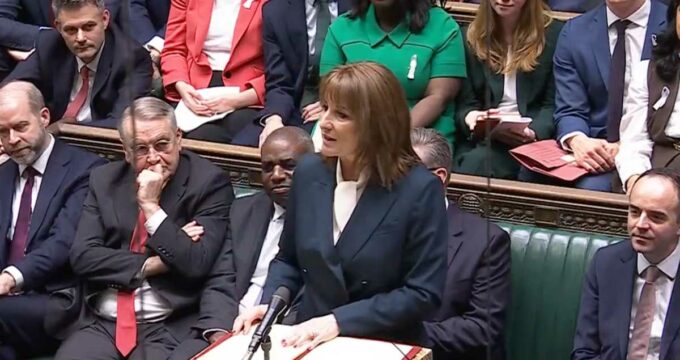What is the right balance of international enrolment in post-secondary education?
- The design and implementation of enrolment caps hinges at least in part on the question of the optimal mix of international and domestic students in post-secondary education
- Recent examples from Australia and Canada variously propose sector-wide caps in the 30-35% range
- Finding the right balance in this respect necessarily factors financial considerations with issues of community license and broad societal support for both international students and post-secondary education
In January 2024, Canada announced a two-year cap on international enrolments. That cap was mandated by the federal government, with an allocation of student visa applications distributed to provincial and territorial governments and from there, to individual institutions and schools.
Australia has announced a cap of its own, the implementation of which is currently planned for January 2025. It, too, is expected to be centrally set and managed by government.
Under pressure from their national government, Dutch higher education leaders announced a plan in February 2024 to voluntarily limit international student intakes.
Those examples all arise from the same context and political imperative, which is simply to limit inbound migration, including the flow of international students. That pressure to cap or reduce student numbers arises from a variety of factors, including broad inflationary pressures, rising costs of living, economic uncertainty, and housing shortages.
However, the merits of any such cap can be hotly debated (e.g., whether one should exist at all, or how it should be designed and managed). Indeed, that conversation is ongoing in destinations around the world this year.
Within the broad question of capping enrolment for a given study destination, or even a given institution, lies another important issue which is specifically relevant for post-secondary institutions that enrol both domestic and international students: what is the optimal balance of domestic and international enrolment?
The question is complicated and naturally resists a "one size fits all" answer, in part because the "right" proportion of foreign students will vary by factors such as level of study (college versus undergraduate versus graduate or post-graduate, in particular), and also by institutional setting (urban versus rural or regional) and the extent of the institution's research portfolio.
This is a live issue in Australia currently, for example, where consultations are ongoing around a planned enrolment cap. Last month, Deakin University Vice-Chancellor Iain Martin argued for an alternative to a government-mandated cap. In an echo of the earlier Dutch example, Professor Martin proposed a blanket cap of 35% – that is, that each Australian university would voluntarily hold its foreign student numbers below a benchmark of 35% of total enrolment. He further suggested that no more than 50% of the foreign enrolment at a given institution should come from any one country, and that there should be no more than 40% of foreign students in any one faculty or field of study within the university.
“If we get [the government-led cap implementation] wrong it will have profound and lasting impacts,” he said, speaking to The Australian. “The government has to realise [international student flow] is not something you can switch on and off at will.”
In a similar vein, in a recent interview with The Guardian, Alec Cameron, the vice-chancellor of RMIT University, argued that international students should not account for more than a third of the total enrolment at a given university. “I wouldn’t [allow universities] to go above one-third,” he said. “Otherwise, the community forms a view about universities.”
Enrolment caps – self-imposed or otherwise – that run anywhere in that 33-35% range are noteworthy because many institutions will already have foreign enrolments above that level. Nearly half (47%) of the enrolment at the University of Sydney, for example, is made up of international students. And that proportion ranges above 35% at some of the country's other leading research-intensive universities, including the University of Melbourne, the Australian National University, the University of Queensland and the University of Adelaide.
The Group of Eight (Go8) is a peak body representing all of those research universities. In its recent consultation submission to government, it argued, "The central command and control regime for international education that caps represent simply will not work. International students have too many quality options in a global context and will not be reallocated around Australia at the whim of the Government." Responding to Professor Martin's suggestion of a blanket 35% cap, Go8 Chief Executive Vicki Thomson said that such an approach is too “blunt and does not take into account different contexts, for example the mix of undergraduate and postgraduate."
Meanwhile in Canada
Keep that 33-35% threshold from the Australian example in mind, because it was reflected again recently in a completely different setting. British Columbia, or BC, is Canada's westernmost province and home to about a quarter of all foreign students in Canada.
The provincial government in BC is reportedly considering an approach where public, post-secondary institutions would be required to hold international student numbers to no more than 30% of total enrolment. Strictly based on recent headcount data from the BC Ministry of Post-Secondary Education and Future Skills, foreign enrolment at most public colleges, institutes, and universities in the province would fall below that threshold currently, but certainly there are some that are bumping up against that line, or perhaps over it.
Building the formula
All that to say there is no easy answer to the question of what is that right mix of foreign and domestic enrolment. Institutions that emphasise post-graduate programmes and/or have extensive research portfolios may naturally attract international scholars in larger numbers. Indeed, they may also need those international cohorts to help offset gaps in research funding or other structural financial issues.
At the same time, there is the question of social or community license for international education. That is, the extent to which local or national populations welcome and support international students during their studies. That social license can be sorely tested in times of economic struggle or in the face of a housing crisis such as we are seeing in many countries this year.
Keep in mind as well that every university and college has to be concerned about the broader social license under which it operates: the community support for post-secondary education and the extent to which it is perceived as a public good. We see that reality reflected in comments such as Professor Cameron's, where he muses about the community view of universities, and social license is a real consideration for any institution in terms of its relationships with governments, community leaders, and other key stakeholders.
Finding the "right" proportion of international students is as much about holding all of those important considerations in balance as anything else. There probably is no absolute answer to the question, but it is interesting to see even in these few examples the threshold settling in that 30-35% range. Pushing the benchmark much below that would trigger significant impacts for institutions in most leading destinations. Setting it much higher would, intuitively at least, start to press on that social license more than many institutions may be comfortable to do.
For additional background, please see:
- Join the ICEF Monitor Global Summit (23 September 23 2024, London). A landmark one-day summit bringing together the industry's senior leaders, policy makers, and experts, all focused on shaping the future of the international education sector.
- "Will the US host 2 million international students within the decade?"
- "The other side of a “V-shaped” recovery: 2024 and the transition to steadier growth in international enrolment"
- "The impact of immigration settings, affordability, and job opportunities on international students’ study abroad decisions"
















